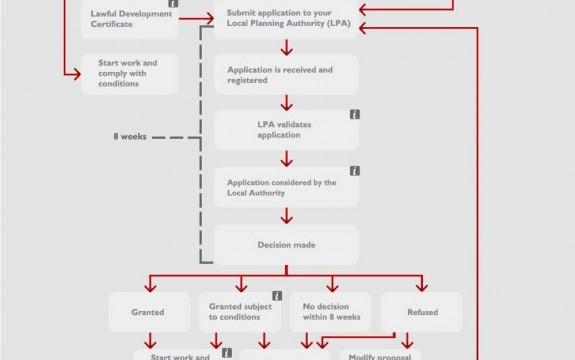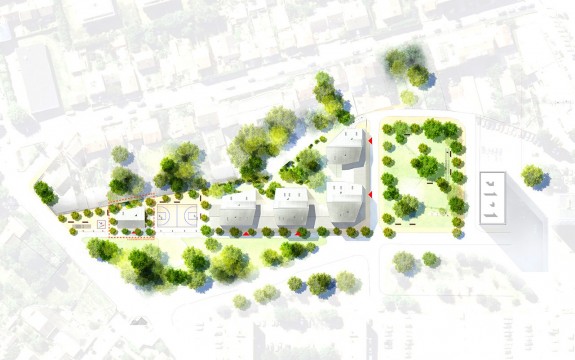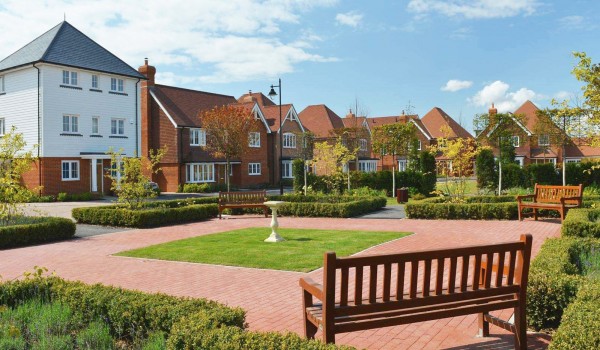Need planning permission & building regulations help for your project in London?
Bischell gets 97% of planning and building applications accepted first time around. Here’s 5 key reasons why:
1). We know the planning process inside-out
Choose Bischell and you have a design and build company on your side which knows just as much about planning laws as your local authority does. We know exactly how they work, what your local authority wants to see and what they are likely to accept or reject.
2). Detailed plans designed to get your project approved
We know what your local authority and building control expect, so you get clear and concise plans with articulated justifications for the project to maximise the chance of approval.
3). Persistence pays
If we believe that your application should be accepted, we will fight for your project every step of the way and use every appeal process available to gain planning approval.
4). Bischell has handled thousands of successful planning applications for clients throughout London
This means that we know the ins and outs of policy frameworks provided by the Unitary Development Plan (UDP). We can also look at previous victories to draw upon precedents which can be used to justify your proposal.

5). Use our design and build innovation to get your favourite ideas accepted
If a feature within your project is rejected, we can put our creative minds to work to try and come up with an alternative method of construction which achieves the same aesthetic result, so you have a higher chance of getting planning approval for your most favourite ideas.
Our main focus: to get your application accepted with the ideas you want the most
It isn’t just about getting approval whatever the cost – it’s about getting approval for plans which still keep all of your favourite designs, ideas and themes intact wherever possible.
We can act on your behalf – just leave everything to Bischell
Planning permission has never been easier with Bischell. We act as your agent to create all of the plans, drawings and paperwork before submitting them to building control and your local authority. We then act on your behalf throughout the process, including the submission of any amendments or additional plans required, and do everything we can to try and get your proposals accepted first-time.
If you aren’t sure about what types of permission you need or how to apply for them, you can leave that to us as well, as we work for your best interests whilst keeping you in control every step of the way.

Bischell can handle all types of permissions and consents
Including:
- Full planning permission and permitted development
- Building regulations
- Lawful development certificates
- Householder planning consent
- Outline planning permission
- Listed buildings consent
- Conservation areas consent
- Heritage statements
- Landlords consent
For residential and commercial extensions through to new build homes and commercial premises of all sizes.
Want the best chance of first-time approval?
Get Bischell on your side – call today. Our ongoing support was designed with your needs at the forefront.
Contact us now or call 020 8964 1814 to discuss your circumstances and find out how we’ll strive to get full approval for your dream project with our 97% first-time approval rate.

Call or email us today
If you have a project you'd like to discuss, please get in touch. There's no obligation. Just give us a call or if you'd rather email, simply complete the form.
07481450786
Why Bischell?
An optional industry-leading lifetime guarantee
We'll give you a fixed price which won't budge
A guaranteed completion date or we pay you
We won’t stop until your project is 100% defect free
360° Support® for peace of mind every step of the way
FAQ's
Planning permission is where your local planning authority governs whether you can carry out a new construction project, such as creating a new building or making a major change to an existing building. Your local authority will check your plans, and if they are acceptable, you will be given planning permission to allow you to begin construction.
Building regulations govern the quality, safety and accessibility of new buildings and major construction projects. These regulations vary considerably, from structure in part A to electrical safety in part P.
Planning permission gives your local planning authority the opportunity to make sure that your project is reasonable and will not disturb the area or cause an obstruction. Without this, anyone could build any building wherever they wish and there’s nothing you could do. Imagine if someone built a skyscraper just behind your garden!
Planning permission also allows people who may be impaired by the build to oppose the plans. For example, if an extension of your property blocked the view out of a neighbour’s window, then they could oppose the plans and bring forward a dispute which your local planning authority would have to consider.
Whilst planning permission can interfere with your own build, it also gives you a safety net when other people are conducting their own build projects which could affect you.
Without building regulations, the construction of major projects would go unpoliced, meaning that builders could create large and complex structures in any way they wish. This leaves the door open to cut corners and potentially create dangerous buildings or project results which could deteriorate or even collapse entirely.
Building regulations are a safety net to ensure that build projects meet a minimum set of standards for quality, safety and accessibility. They stipulate a set of rules for structural construction, and also requirements in areas of fire safety, ventilation, drainage, energy-efficiency, disabled access, electrical wiring and more.
By having a design and build project which follows building regulation standards and is backed up by the relevant plans, you know that your residential or commercial project will be safe and pass regulations when inspected.
If you commence building before obtaining planning permission, you can be served an enforcement notice which orders you to undo all of the work that you’ve done up to that point. If you’ve just finished creating a new building, you may even be forced to demolish it entirely.
If you contravene building regulations, the Building Control Service can pass the case to your local authority, which has enforcement powers to make you alter your project to comply with building regulations if deemed necessary.
Your local authority can also take you to the magistrates’ court, where you could be fined up to £5000 for failing to comply with the regulations, and up to a further £50 for each day that your project fails to meet building regulations after you are convicted.
This is why obtaining planning permission and ensuring that your build follows building regulations is vital. It gives you peace of mind that your build project can proceed without any issues and that the finished result follows the formal standards of safe construction.
You are responsible for complying with planning permission and building regulations, so you need to assess whether you must seek approval before beginning the construction stage of your project. Whilst there are government resources designed to help you decide whether you require planning permission or not, it’s generally wise to seek professional help instead of being unsure. Many design and build companies can help you with this.
Permitted development was introduced by the government in an attempt to encourage growth in the construction industry. If your project falls within a certain set of rules laid out by the government, then you can carry out your project without applying for full planning permission. However, like with planning permission, it’s best to seek a professional opinion before embarking on the build. Design and build companies like Bischell fully understand permitted development laws and can give you a definitive answer on whether your project falls within these guidelines.
Planning permission
Planning permission generally covers new build properties, extensions to properties and any other major work. A general rule of thumb is that any project which results in a noticeable change to the outside of a building may require planning permission, such as:
- Loft extensions
- Extensions
- Porches
- Conservatories
- Outbuildings
- And more
However, in many cases these can fall under permitted development.
Building regulations
Building regulations in the UK are split into 13 parts covering a wide range of areas, from Part A through to Part P. A brief summary is as follows:
Part A – Structure. Making sure that the structure is safe and robust. This includes a set of design standards laid out for build companies to follow. Part A also ensures that a build project does not interfere with the structural integrity of nearby buildings.
Part B – Fire safety. Ensuring adequate fire protection and means of escape. Part B controls fire spread and sets minimum guidelines on how fast a fire spreads through the property and how resistant the structure is to fire damage.
Part C – Resistance to contaminants and moisture. Part C regulates how the build project deals with hazardous materials found on-site (for example, in the ground). It also dictates how resistant a building must be to weather, ground moisture and other things.
Part D – Toxic substances. This part regulates the use of toxic chemicals used during the build project. For example, this can include hazardous chemicals used in insulation systems.
Part E – Sound. Part E requires that rooms meet minimum standards of sound insulation without excessive noise pollution. It also ensures that your property is adequately insulated to prevent sound pollution in nearby buildings.
Part F – Ventilation. This ensures that there’s adequate ventilation to meet air quality standards, specifically in areas of washing facilities, bathrooms, kitchens and sanitary conveniences.
Part H – Waste disposal and drainage. Part H regulates drainage and waste disposal systems, including the technical design of these systems to ensure that they provide adequate disposal properties. The areas covered include foul water drainage, wastewater treatment, building over sewers, rainwater drainage and solid waste storage such as bins.
Part J – Combustion appliances and fuel storage systems. Part J controls the installation and safe use of boilers, flues, hearths, chimneys and any sort of fuel storage system. This includes the safety of the installation, the suitability of the materials and the risk of carbon monoxide poisoning.
Part K – Collision, falling and impact protection. Part K regulates the safety of a structure in relation to the dangers of impacts and falls. For example, stairwells, ramps and windows need to be adequately protected to minimise the risk of falling and help to prevent injury.
Part L – Energy efficiency. This part governs conservation of fuel and power in many aspects of the property – including windows, doors, insulation, hot water, lighting and the efficiency of boilers and other heating systems.
Part M – Building use and access. Part M regulates the access to a building, how easily people can use the building and facilities for disabled people. Certain buildings, such as schools and those in the public sector, have a stricter set of rules alongside part M.
Part N – Glazing and windows. Part N sets minimum safety standards in the general use and cleaning of windows. It also sets out the requirements of safety glazing and adequate warning stickers to minimise the risk of impact hazards.
Part P – Electrical safety. This final part sets the minimum safety standards for electrical wiring and the use of electricity in a property. It not only covers internal electrics, but also electrical systems in gardens and outbuildings.
Sometimes, your project may be dictated by certain types of planning permission and their relevant applications. Some of these include:
Householder planning consent – An application for proposals to alter a single house. This applies to projects like extensions, conservatories and garages.
Outline planning permission – A brief application to assess whether the scale and nature of a proposed project would be acceptable before a fully detailed application is made.
Listed buildings consent – If you want to demolish, alter or extend a listed building, then you may require listed buildings consent.
Conservation area consent – An application to demolish, alter or extend a building within a conservation area (a designated area which is preserved for architectural or historic interest).
Heritage statements – If your project affects a heritage asset, then you may have to produce a heritage statement which explains the project’s significance and justification for the work.
Landlord consent – If you don’t out-right own your property, then you may have to seek formal landlord consent before development begins.
Party wall act – If your property shares a wall with another building, then the Party Wall Act governs what you can do to the wall and the process to follow if a dispute is raised by the owner of the property who you share the party wall with.
Planning permission and building regulations approval are both achieved in a similar manner:
1). Preparing drawings
An especially designed set of drawings and plans need to be created to show the decision-making bodies everything they require to grant or refuse approval. This not only requires the need for formal construction plan drawing skills, but also a detailed understanding of what the control bodies need to see. Professional assistance from design and build companies such as Bischell is usually required.
2). Submitting drawings and paperwork
The relevant plans are submitted alongside the required paperwork to complete the information the control bodies need. Companies like Bischell can submit all of the paperwork and act on your behalf as an agent during the process. Planning permission applications are sent to the Local Planning Authority (LPA), whilst building regulation applications are sent to Building Control.
3). Plans are assessed
The relevant bodies then begin to assess both applications. Your planning permission application is considered by your Local Authority, whilst building regulations are checked and consulted with any relevant authorities.
4a). Plans are approved
If the relevant bodies approve your plans, then you will be sent a confirmation allowing you to start the project.
4b). Plans are approved subject to conditions
If the plans are approved subject to conditions, then you may need to submit for approval, further details of the development that were not fully explained in the initial application.
4c). Plans are refused
If the plans are refused, then modifications can be made before re-submitting the plan for approval. If the applications are still refused, then a new application can be submitted which factors in the control body’s grounds for rejection.
Building notice – another alternative
An alternative to the normal building regulation approvals process is known as building notice. Instead of submitting the plans before the project commences and then waiting for approval, the project starts immediately and is then inspected by an inspector at various stages throughout the project. As long as the inspector is satisfied that all building regulations are met throughout the construction process, then no final completion certificate needs to be issued by Building Control.
Because plans are not required to proceed with building notice, it is a quicker route than following the full plans application. However there are risks involved. You must be certain that your project will not fall foul of building regulations or you will be forced to take corrective action by your Local Authority. This in itself can produce unanticipated costs and delays because you don’t have the protection of fully approved plans to begin with. With that in mind, it’s always best to consult with a professional before choosing the building notice route.
Building Control Bodies (BCBs) are there to check that all building regulations are being complied with by assessing the development sites. There are two types: Local Authority Building Control (LABC) and Approved Inspector Building Control (AIBC), which is a private sector inspector. Both of these bodies can legally assess, approve or deny building regulation proposals.
You are free to choose whether you use an LABC or AIBC inspector to assess whether your project is following building regulations. Bischell recommends private sector AIBCs as they are generally cheaper, more responsive and more motivated to help you move your project along whilst still strictly adhering to building regulations.
If you want to be absolutely sure that your build project is lawful, or sure that your project meets the standards for permitted development, then you can apply for a Lawful Development Certificate (LDC).
This is less about the careful and subjective consideration of your project (as you would find during the planning permission process), and more about the clear-cut rules of whether your project falls foul of any laws and whether it’s in the defined rules for permitted development. An LDC can give you peace of mind before a project begins if there is any uncertainty in these areas.
Whilst the project itself plays a major role on the chances of approval, the quality of an application is also important. Accurate drawings and the correct paperwork can ensure that the approval process is smoother with a lower risk of delays. This means that your choice of design and build company can dictate whether you get approval within the timescales required. Whilst we can’t speak for other design and build companies, Bischell has a high 97% success rate for planning applications being accepted first-time around; with the last few usually being accepted after minor amendments are made. As one of the most successful London builders, we have plenty of experience and expertise with regards to the entire process and we aim to make the procedure as simple and efficient as possible.
It is important to stress that a project’s clear violation of a planning permission or building regulation rule will cause it to be rejected no matter how good the application is, but by hiring an experienced design and build company, they can use their experience to filter out any problems and address them before planning permission is applied for.
Still not sure? Check out our accreditations and credentials here.
Some of our clients
Sign up to the newsletter
Join over 1000+ people and get fortnightly design and construction tips and advice.
We guarantee 100% privacy. Your information will not be shared. Unsubscribe at any time with a single click
Based around six key pledges, it’s our promise to you to ensure rock-solid reliability and a seamless, hassle-free project

















